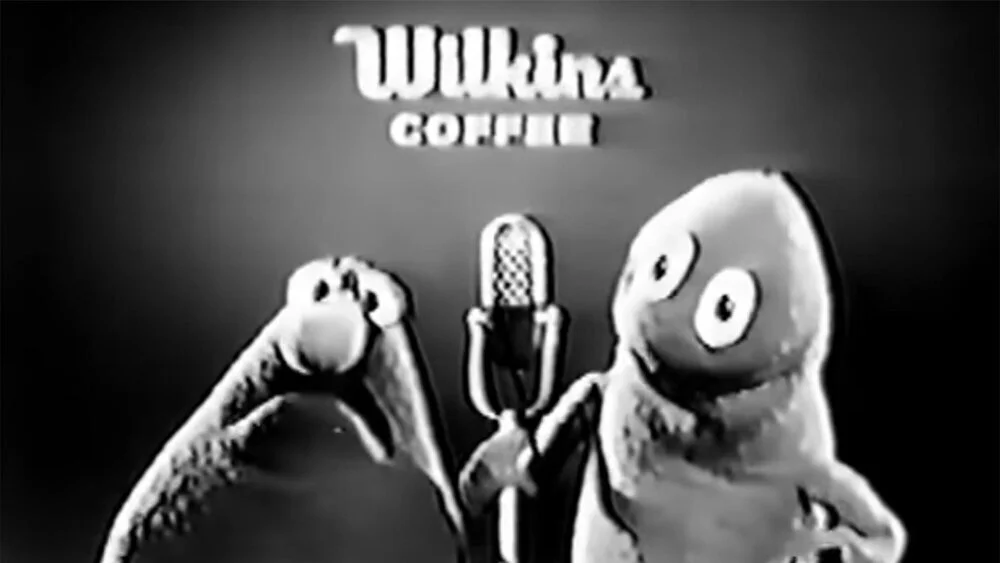Want a cup of Wilkins Coffee?
Early in his career, before the Muppets, Jim Henson was hired by Wilkins Coffee to create a series of TV commercials for the Washington DC market.
The resulting 179 ads, featuring the characters Wilkins and Wontkins, were brilliant, and highly successful for the brand. This was the late 1950s, so the ads feature sadistic cartoonish violence that probably would be unacceptable now – characters being shot, blasted with cannons, tumbling out of airplanes, etc. Nonetheless, the campaign illustrates some key points about successful advertising that remain relevant:
You can say a lot in a short period of time. These ads are 8 seconds long, with a two-second end card, but each one tells a coherent little story.
The brand drives the story, which is where many ads fall short. The brand isn’t just slapped on at the end, nor is it a PSA about a particular way of life brought to you by Wilkins Coffee. The story is about Wilkins coffee.
Recurring creative devices can be memorable. As I argued in this Quirk’s article, recurring characters or tropes can add emotional salience to a campaign and get consumers talking.
There are no product attributes anywhere in the campaign and nothing resembling a rational argument. In many ways instant coffee is instant coffee, so any product-level differences were presumably minor, at best. Nonetheless, this clever campaign really elevated a brand that probably had very little to distinguish it from its competitors.

